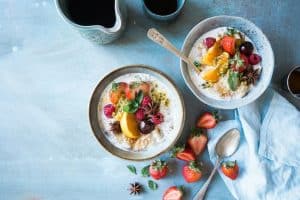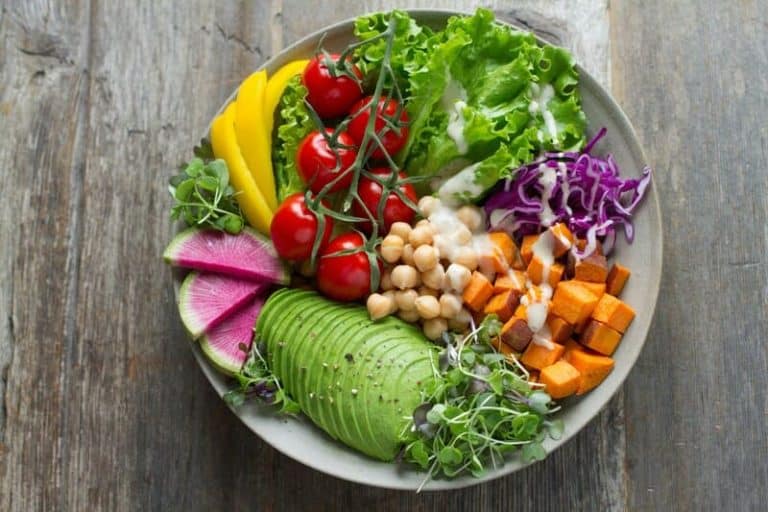From opinion leaders to marketers, the belief that eating healthy is expensive is mostly a misconception. There have been studies that compare the costs per calorie, which often tells us that unhealthy foods are cheaper because they are calorie-denser. The reality is that cooking from scratch can significantly reduce costs compared to buying processed meals.
Healthy eating doesn’t have to break the bank of health. In this blog post, we will delve into how to eat healthy.
How To Eat Healthy Without Breaking The Bank

1. Plan Your Meals
When you plan your meals, it ensures that you adhere to nutritional guidelines, promote food variety, and encourage home-cooked meals, which are often healthier. Again, you should consider your schedule, dietary needs, and ingredient availability. Now, based on your meal plan, you should create a grocery list to ensure you have all the necessary ingredients. By incorporating meal planning into your daily routine, you will be better equipped to maintain a healthy eating habit, reduce stress, and save time and money.
2. Buy In Bulk
The financial benefits you can get from bulk purchasing your staple foods are enormous. Bulk buying often reduces the cost per unit and also reduces trips to the store, saving time, fuel, and money. Plus, bulk purchases can be stored for extended periods, reducing food waste and saving money. Again, bulk purchases can ensure a steady supply of fresh staples, reducing the risk of expired or spoiled food. Buying in bulk from a trusted supplier ensures consistent quality and taste. Some popular staple foods to purchase in bulk include Grains, Nuts and Seeds, Dried fruits and vegetables, and baking supplies. Adding bulk buying to your healthy meal journey, you can enjoy significant financial, convenience, quality, environmental, and strategic benefits.
3. Choose Seasonal And Local Produce.
There are several advantages to eating healthy, as seasonal produce is harvested at peak ripeness, which ensures you get higher levels of vitamins, minerals, and antioxidants. It offers better flavor compared to out-of-season items that may be chemically modified. Subsequently, eating locally and seasonally reduces carbon footprint by minimizing transportation and storage needs. Seasonal produce is often more affordable due to abundance during harvest periods. In simpler terms, opting for seasonal and local produce supports personal health, the environment, and the local economy.
4. Reduce Processed and Package Foods
Consuming high amounts of processed and packaged foods has been linked to diseases like diabetes and heart attacks. Taking in too much processed foods can lead to inadequate nutrient intake, causing deficiencies in essential vitamins and minerals. Processed and packaged foods often contain artificial additives, preservatives and sugars that can disrupt the balance of gut bacteria, leading to digestive issues and other health problems. Prioritize whole, unprocessed foods, including fruits, vegetables, whole grains, lean proteins, and healthy fats. Support small-scale farmers and advocate for sustainable agriculture practices.
5. Focus On Nutrient-Dense Foods
Focusing on nutrient dense foods is crucial when trying to eat better on a budget because these foods provide the most vitamins, minerals and essential nutrients per dollar spent. Whole foods rich in fibre, protein and healthy fats such as (beans,whole grains, lean proteins) provide sustained energy, reducing the need for frequent snacks and extra meals. A healthy meal rich in essential nutrients supports brain function and overall wellbeing, helping you stay productive without relying on costly energy boosters like sugary drinks. By prioritizing nutrient denser foods, you get more health benefits while keeping grocery bills manageable.
Conclusion
Making the shift to eating healthy on a budget doesn’t have to be overwhelming. Start small by incorporating one or two cost-effective and nutritious choices into your routine, such as swapping sugary drinks for water or buying whole grains in bulk. Remember, eating well is a journey, not a race progress is more important than perfection.
By planning meals, reducing processed and packed foods, and choosing local produce, you will discover that nutritious eating is both affordable and sustainable. Every healthy choice you make is a step in the right direction and with a little planning and creativity, you can nourish your body without draining your wallet.









